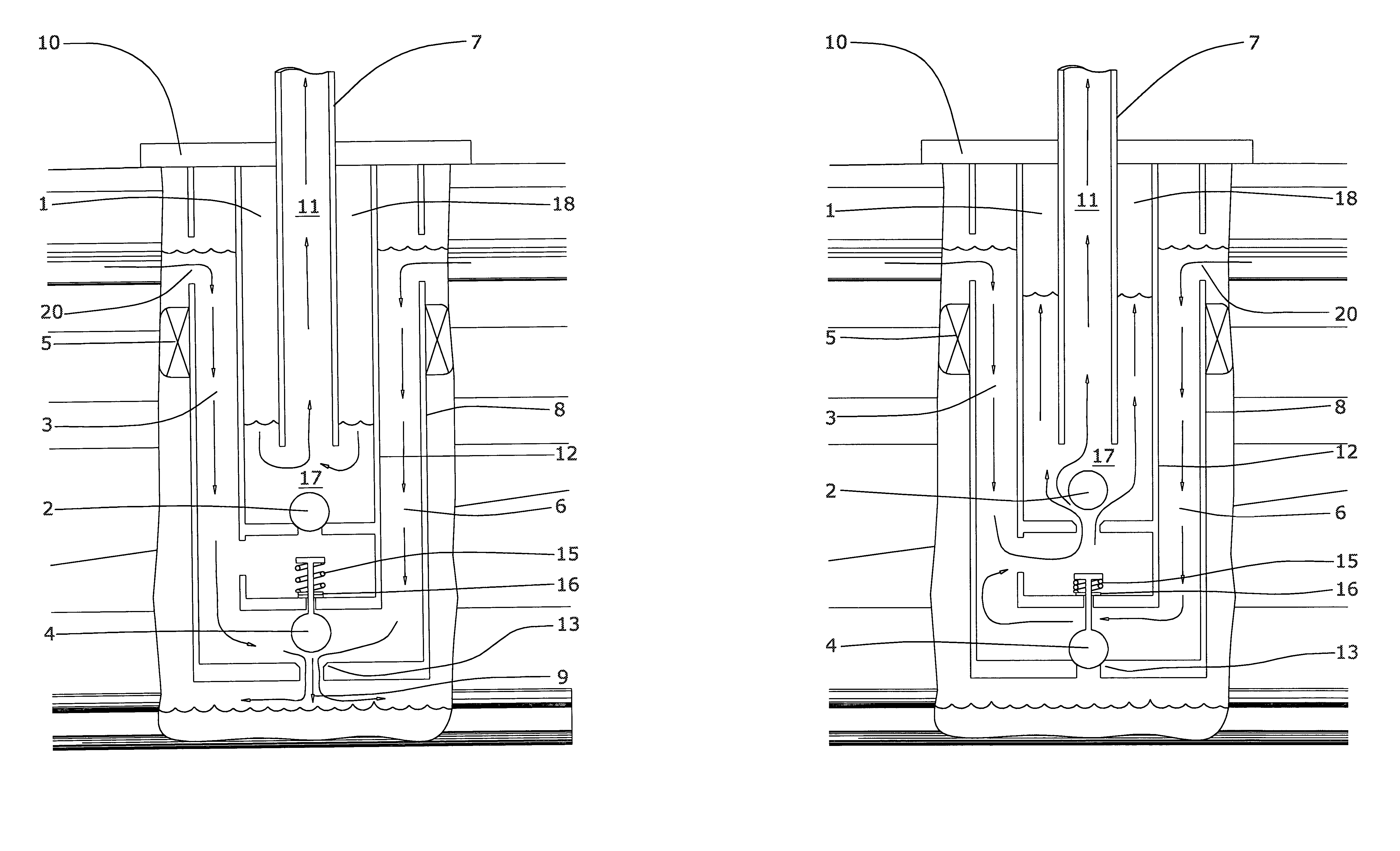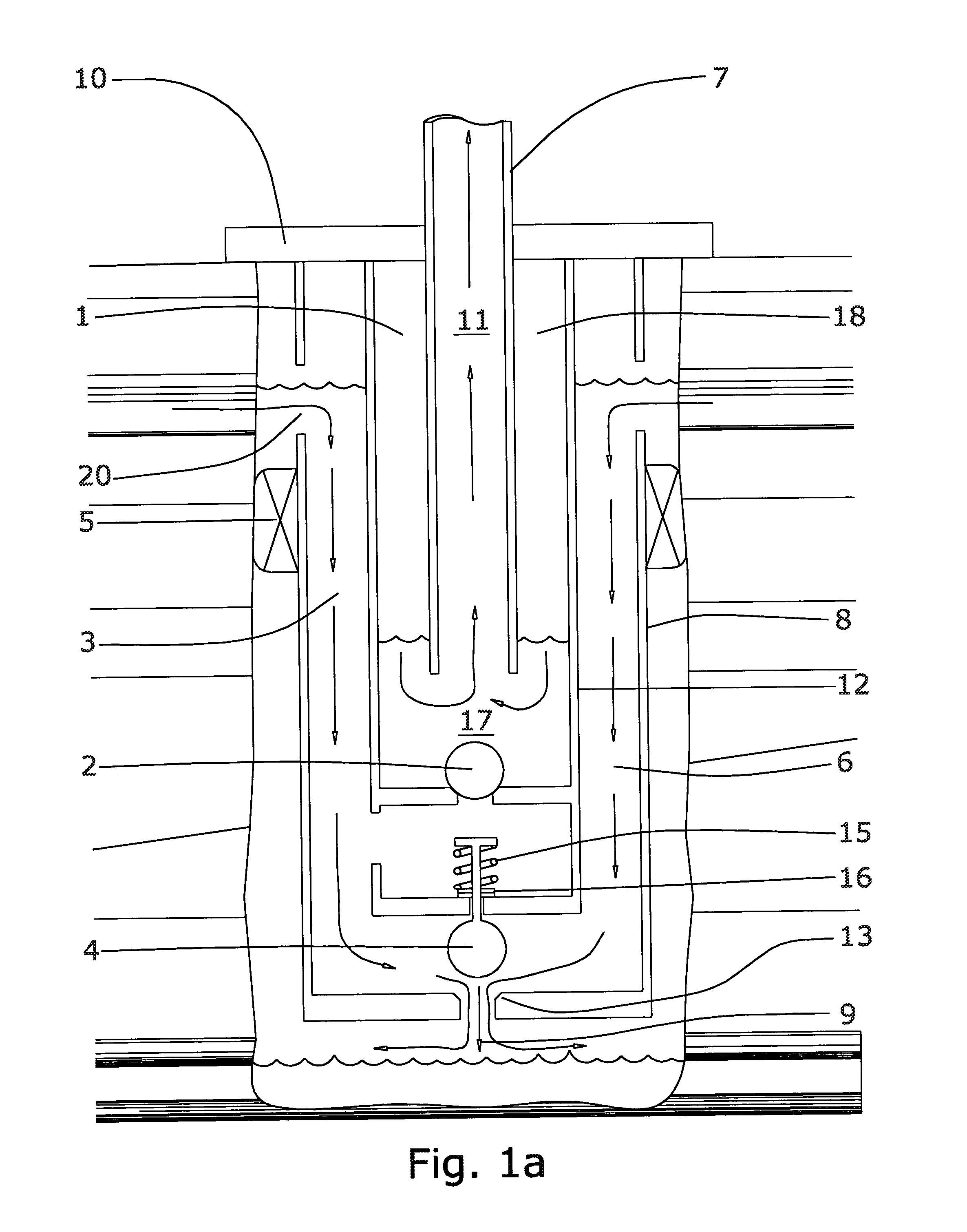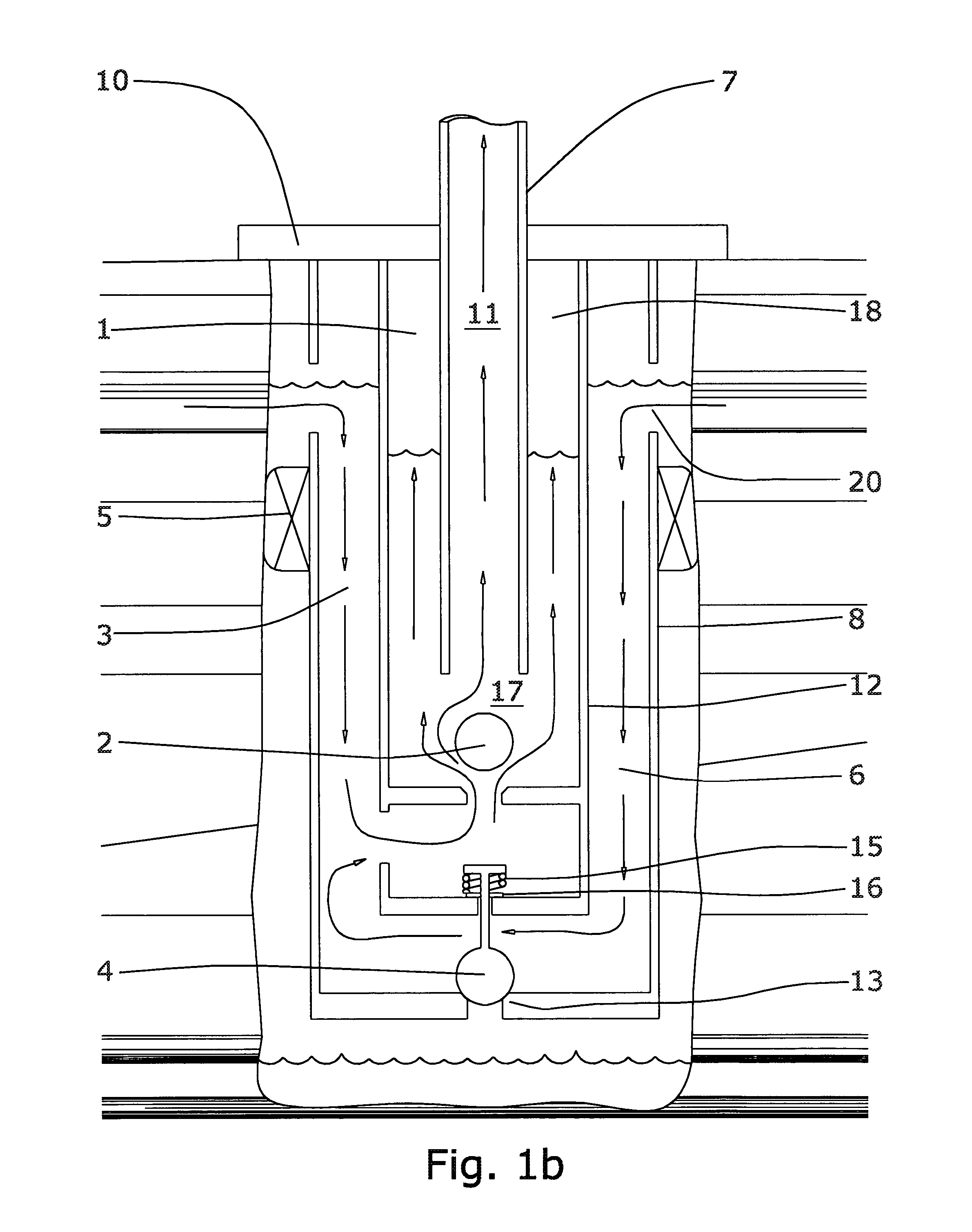Downhole hydraulic ram
a hydraulic ram and downhole technology, applied in machines/engines, borehole/well accessories, sealing/packing, etc., can solve the problems of not being able to pump salt water to the surface, the wellbore should not be completed, and the salt water is not normally useful for agrarian activities, so as to improve the water quality and improve the lower aquifer water quality
- Summary
- Abstract
- Description
- Claims
- Application Information
AI Technical Summary
Benefits of technology
Problems solved by technology
Method used
Image
Examples
Embodiment Construction
[0027]An object of this invention is to install the casing 8 (The casing discussed here is actually a large size production tubing. The wellbore liner, commonly referred to as casing, that is normally cemented in place is not discussed in this description but is in the claims.) from the surface to the desired location for the valving means. The casing 8 is provided with porting 20 located at the upper supply water level to allow the water to flow into the outer annulus 6 and fall downward to the hydraulic ram valving means. Porting 20 means to control the flow are also included in this invention. Well-known oil and gas equipment such as orifices, ported nipples, sliding side doors, and ball and flapper valves can be used. Sealing system means comprised of isolation packers 5 or cement are used to prevent the bypass of water between the earth wellbore wall and the casing 8 directing the flow to the porting means 20. A manifold for gathering water such as gravel pack and horizontal bo...
PUM
 Login to View More
Login to View More Abstract
Description
Claims
Application Information
 Login to View More
Login to View More - R&D
- Intellectual Property
- Life Sciences
- Materials
- Tech Scout
- Unparalleled Data Quality
- Higher Quality Content
- 60% Fewer Hallucinations
Browse by: Latest US Patents, China's latest patents, Technical Efficacy Thesaurus, Application Domain, Technology Topic, Popular Technical Reports.
© 2025 PatSnap. All rights reserved.Legal|Privacy policy|Modern Slavery Act Transparency Statement|Sitemap|About US| Contact US: help@patsnap.com



